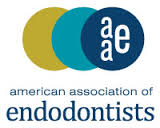When discovered in its earliest stages gum disease can be reversed, but as it progresses that is not so. Left untreated gingivitis, the earliest stage of gum disease, can advance to periodontitis and eventually lead to tooth loss and other more serious health problems. Although all patients need to know is that they have gum disease and how to treat it, knowledge is power, and it may help to know there are several different types of periodontal disease which are listed below.
The Six Types
Gingivitis: Healthy gums are pink and firm. If your gums are red, swollen, bleed easily, or sore, you may have gingivitis, the mildest form of periodontal disease. Usually caused by a lack of oral hygiene, gingivitis is gum disease at its reversible stage. By seeking professional treatment and performing proper oral home care, your gums can be reinstated to health.
Periodontitis: Periodontitis is advance gum disease. It not only affects your gum tissue, it spreads below the gum line, affects your teeth, and deteriorates your jawbone leading to tooth loss and jawbone atrophy. Symptoms include chronic bad breath, receding gums, and gingival pockets which may contain pus as a result of infection.
Aggressive periodontitis: This is the rapid progression of periodontitis. Gingival tissue, gingival ligaments (which hold your teeth in place), and bone destruction progress at an advanced pace.
Chronic periodontitis: Describes inflammation of the supporting gingival tissues of the teeth and bone loss. This is the most common form and is characterized by gum recession and gingival pockets. Deterioration usually occurs slowly.
Systemic periodontitis: Is the development of gum disease due to systemic disease. Systemic conditions can include:
- Diabetes
- Heart disease
- Respiratory disease
Necrotizing periodontal disease: This type of gum disease occurs most commonly in people suffering from systemic diseases including malnutrition, immunosuppression, and HIV. Necrosis is the death of living tissue meaning the gingival tissue, periodontal ligaments, and alveolar bone are not eaten away by disease, but are deprived of the nourishment they need to remain healthy.










